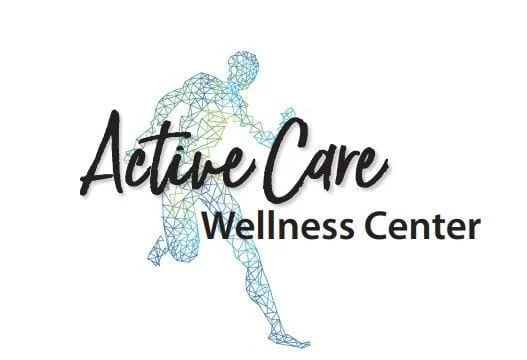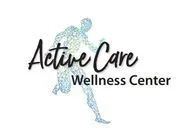
- posted: Jul. 28, 2023
I understand concussions are bad and that they shouldn’t be overlooked, but how do I know if my child or I have completely recovered from the injury? I don’t play sports and I am fairly careful with my everyday activities; I shouldn’t have to worry about concussions, right? As a parent I want to be proactive in recognizing symptoms and helping my child get better, so what should I look for? If concussions are so popular, why haven’t they created a cure or solution to the problem? These are just a few of the questions healthcare providers get about the ever-changing significance of concussions.
According to the Center of Disease Control and Prevention (CDC) a concussion is, “a mild traumatic brain injury (mTBI), caused by a bump, blow or jolt to the head or body leading to your head and/or brain being moved back and forth.” The quick movement of the head can cause chemical changes in the brain or even stretch and damage brain cells. (Center of Disease Control and Prevention, 2019) Notice in the definition it doesn’t mention anything about athletes or children? That’s because concussions can happen to anyone and isn’t exclusive to young athletes. In fact, the individuals at greatest risk for concussions and concussion-type symptoms are military personnel and older individuals following a fall.
Jumping back to the original questions healthcare providers are often asked, let's dive into some symptoms and what to look for. First, we need to understand that not all of the symptoms listed will be required to lead to the diagnosis of a concussion. Next, it is good to know that everyone is different in how their symptoms present and the severity of the symptoms. According to the CDC these are the Signs and Symptoms to notice:
Signs | Symptoms |
Inability to recall events | Headache or Pressure in Head |
Appearing Dazed or Stunned | Nausea or Vomiting |
Confused on how to do a task | Balance problems or Dizziness |
Clumsy movements | Light or Sound Sensitivities |
Answers questions slowly | Feeling of sluggishness or groggy |
Loss of Consciousness (Even Briefly) | Confusion or memory issues |
Changes in Mood or Personality | Just not “feeling right” or “feeling down” |
Signs and symptoms will change drastically for the first couple of hours to a couple of days following the injury. An individual might start out as dazed or a little confused, but as time proceeds memory of events, mood changes, and sensitivity to light and sound often become present.
The difficult part about concussions is that there is no objective measure for concussions. Concussions can’t be seen on an X-ray, MRI, or CT scan. So, in order to diagnose a concussion a medical provider has to do memory testing, balance testing, and visual testing to delineate a correct diagnosis.
The next step for individuals with possible concussion symptoms is to monitor the symptoms and see a healthcare provider trained in concussion rehabilitation. Left untreated concussion symptoms can linger on for months, if not years. The consequences of a concussion going untreated is the risk of 2nd Impact syndrome or even chronic traumatic encephalopathy (CTE). These conditions are more debilitating leading to the possibility long term memory loss, changes in mood and aggression, impulse control as well as increasing the risk of progressive dementia.
Concussion treatment and rehab is a progressive procedure aimed at understanding an individual’s activities that cause an increase in symptoms. From there the provider plans a treatment plan best fit to decrease the patient’s symptoms by incorporating gradual aerobic exercise, balance and coordination activities, and visual cues. These treatment options are used to assist in bringing oxygen back to brain (aerobic exercise), and stimulate neuronal growth or neuroplasticity back to the brain. (The Latest in Concussion Treatment and Recovery, Dr. Dustin Ballard, 2022) Recently at the International Conference of Concussion in Sports in October of 2022, a group of 100 researchers and clinicians discussed the importance of these treatment options for concussions. They confirmed the best way to assess and rehab someone for a concussion is through the Sport Concussion Assessment Tool 6 (SCAT6). The SCAT6 lays out baseline testing to compare signs and symptoms following a concussion to better understand the effects of the concussion.
Not only is the SCAT6 program a great tool for rehab and assessment but it also clearly lays out the “Return to Play” protocol, and the correct steps in assessing whether an individual is ready to return to a sport, work, or activities they would have normally been doing prior to the injury. As an individual with a concussion, or a parent with a child experiencing concussion symptoms the best way to stay proactive in the healing process is to be educated and see a healthcare professional. Concussion injuries are constantly being studied, with more and more research coming out every day for better treatment plans and options.
Be aware and educated on the signs and symptoms of concussions. When there is a chance that an injury has led to a concussion, be proactive and see a healthcare provider trained in concussions.
Locations
212 Main Street
Stevensville, MT 59870, US
Office Hours
Our Regular Schedule
Closed
Closed
7 AM
6 PM
8 AM
6 PM
7 AM
6 PM
8 AM
6 PM
Closed
Closed
Closed
Closed

